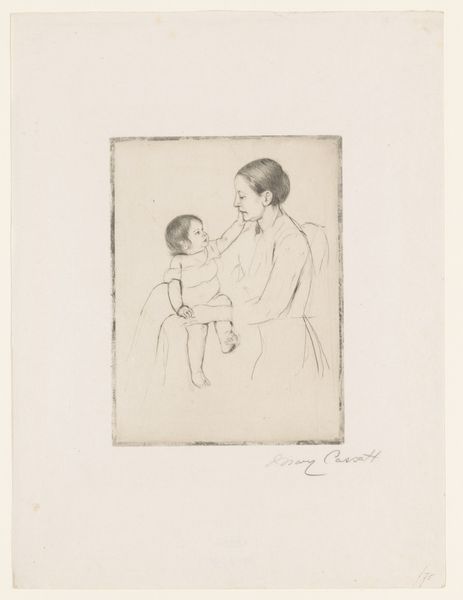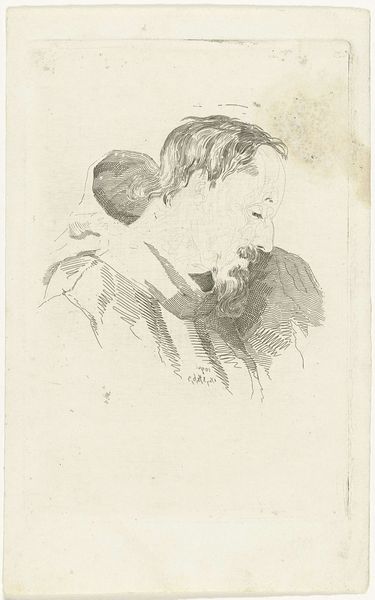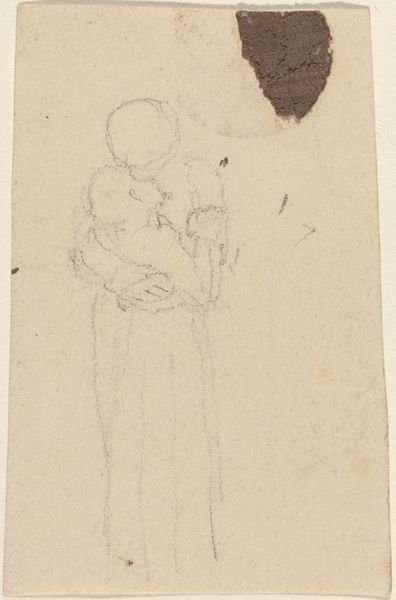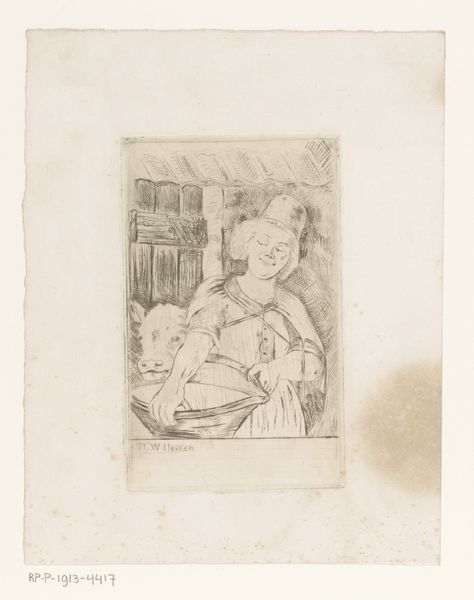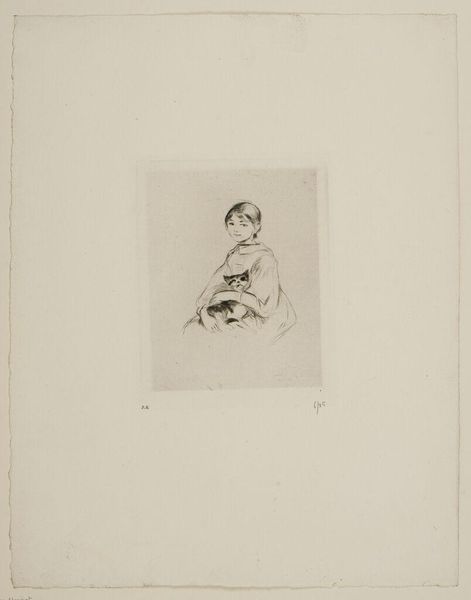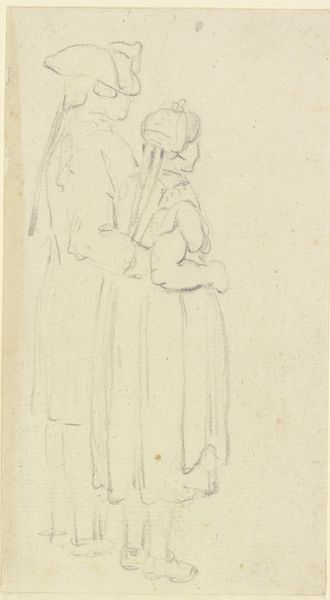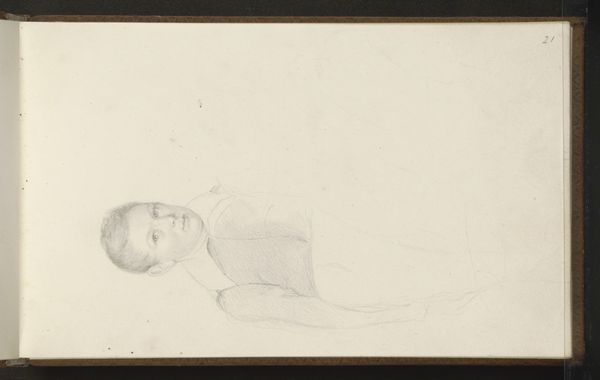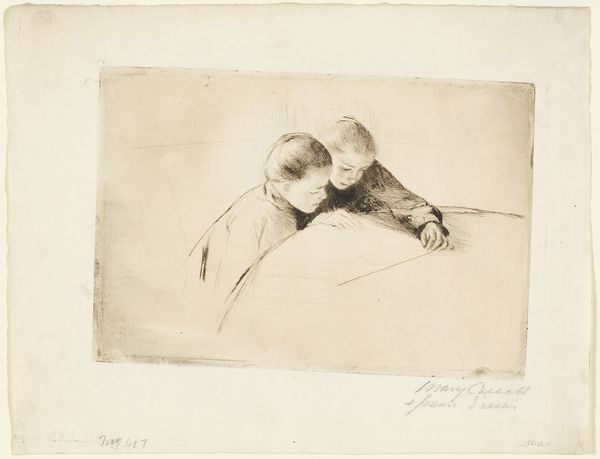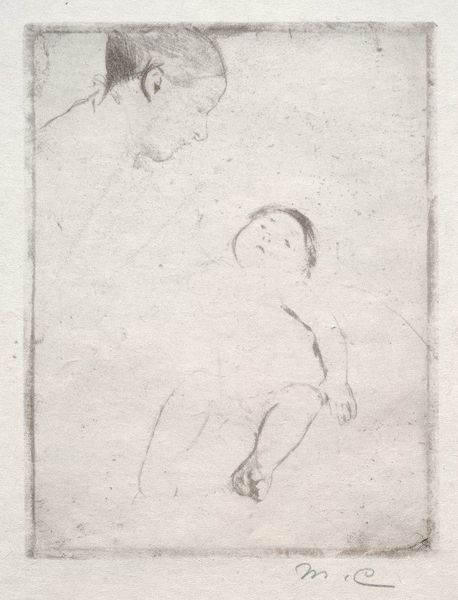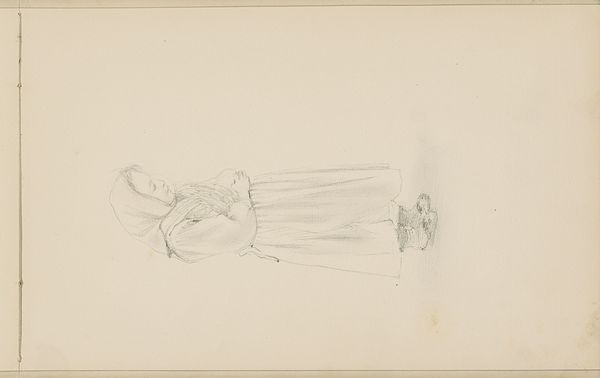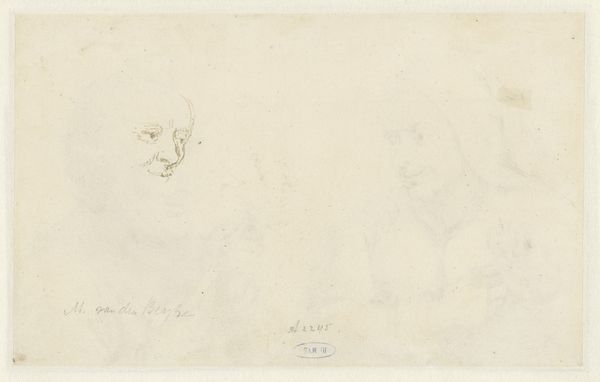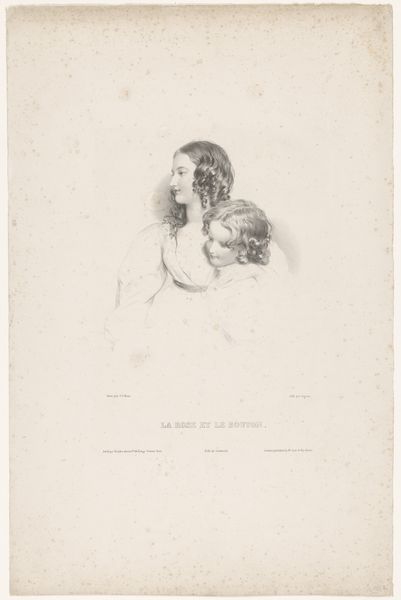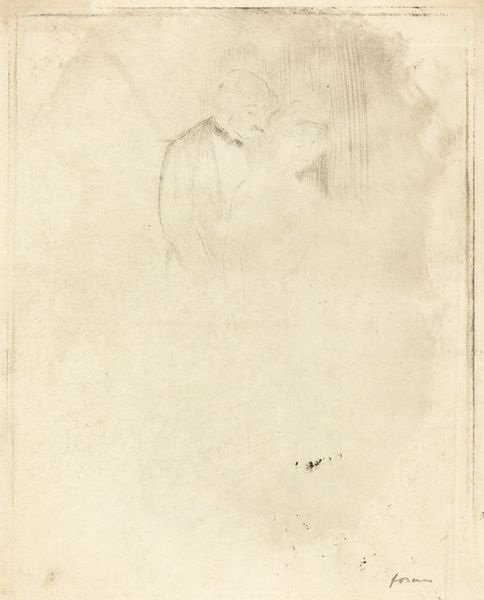
drawing, print, drypoint
#
portrait
#
drawing
#
toned paper
# print
#
impressionism
#
united-states
#
sketchbook drawing
#
drypoint
Dimensions: 7 7/16 x 5 7/8 in. (18.89 x 14.92 cm) (plate)12 x 9 1/2 in. (30.48 x 24.13 cm) (sheet)
Copyright: No Copyright - United States
Curator: Seeing Mary Cassatt’s drypoint print, *Solicitude*, dating from around 1889, at the Minneapolis Institute of Art – it strikes me as a study in quiet tenderness. What’s your initial read? Editor: It’s incredibly delicate. The tones are so soft, almost whispered. There’s a palpable sense of intimacy, wouldn’t you say? A very private moment. Curator: Absolutely. The impressionistic style contributes to that feeling. Cassatt’s work consistently portrays these intimate moments between women, particularly mothers and children, often challenging the dominant male gaze in art history. It is quite different from the typical subject of art at the time. Editor: That maternal theme runs strong. This particular portrayal feels raw, almost like a sketch directly from a sketchbook. How would that depiction play into, and be received, by the burgeoning feminist art scene emerging around the turn of the century? Curator: Cassatt aimed to show women as complete human beings. Her commitment to depicting the female experience, in all its nuanced reality, empowered other women artists. By doing so she promoted alternative visual vocabulary that explored how art constructs societal roles, as well as what lies beneath the surface. She helped make visible the complex roles of women that existed then, as it does now. Editor: So, more than just sentimentality at play. A subversive undercurrent. Curator: Exactly! Motherhood can become a symbol of something larger in social, cultural, and historical narratives about how women express their position within society. Editor: Considering Cassatt’s social background, how did her socio-economic privilege intersect with the images she chose to create, and what implications would there be in those intersections? Curator: Cassatt herself recognized how fortunate she was, using that privilege to subvert expectations by displaying intimate scenes in what, at the time, were the exclusive halls of European painting and etching. By injecting this emotional theme in places typically unavailable to women or their work, she allowed women, both viewer and subject, to become a powerful presence. Editor: This glimpse of the universal experience within those circumstances, those particular societal and social boundaries, has been thought provoking, thank you. Curator: Agreed. It's always fascinating to consider what Cassatt’s works can reveal about visual languages through the ages, which are a source of our contemporary artistic consciousness.
Comments
No comments
Be the first to comment and join the conversation on the ultimate creative platform.
